
Annual Forbs Around Las Vegas, Vegetation Around Las Vegas
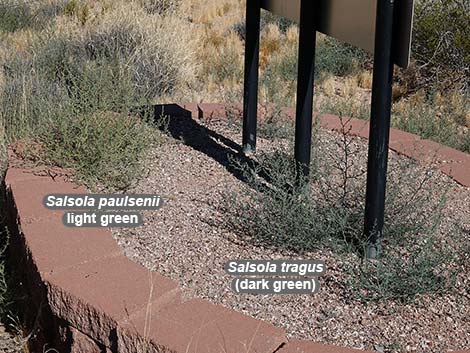 Barbedwire Russian Thistle (light) and Prickly Russian Thistle (dark) |
General: Barbedwire Russian Thistle (Salsola paulsenii) is an invasive weed that does well on lower-elevation disturbed soils. When dried out and rolling across the ground on a windy day, everyone recognizes tumbleweeds. When green, the plant grows long, upward and outward stretching stems that curl up into a large ball or basket (3 to 4 ft diameter) as they dry out. The main stem breaks free from the root when the seeds are ripe, allowing the plant to blow across the landscape spreading seeds. The non-native species does poorly in competition with native species on undisturbed soils. Barbedwire Russian Thistle are recognized by green (not reddish) stems, spines that are stout from the seedling stage on, the first four seedling stems arranged as an X, and white "flowers" with a pale pink center. In particular, they are recognized by the near-spherical shape of the plants at immature stages and overall light green (yellow-green) color. The stems are rigid and stout with little, if any, red pigment. The leaves are thick with sharp spines at all stages. The flowers (calyx-bracts) are large, mostly white, and have prominent veins. Compare with Prickly Russian Thistle. Barbedwire Russian Thistle is a common component of vegetation communities on disturbed soils throughout lower-elevation urban and desert areas in the Lower Sonoran (Creosote-Bursage Flats) and Upper Sonoran (Mojave Desert Scrub and Pinyon-Juniper Woodland) life zones. |
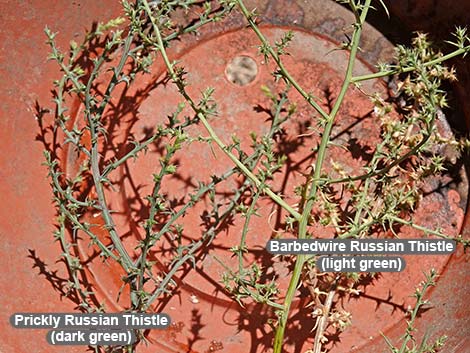 Barbedwire Russian Thistle (light) and Prickly Russian Thistle (dark) |
Family: Goosefoot (Chenopodiaceae). Other Names: Tumbleweed Plant Form: Annual forb that grows long, outward stretching stems that curl up into a large ball or basket (3 to 4 ft diameter) as they dry out. Height: About 3 to 4 ft. Stems: Main stem at base to about 1/2-inch diameter. Branches many, thin. Stem green with red or purple stripes when young, aging to yellowish. Stem breaks free when seeds are ripe. Leaves: Blades 1/3 to 4 inches, thread-like, becoming sharp pointed. Flowers: Blooms summer through fall. Flower inconspicuous, in leaf axils; look like saucers with pinkish center. |
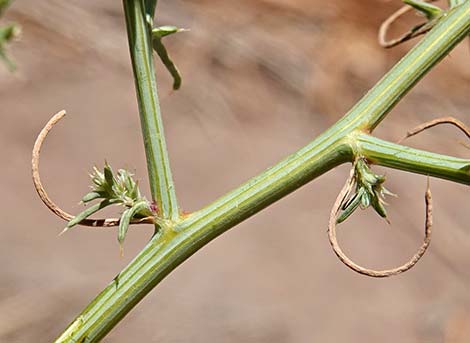 Stems light green, without much red |
Seeds: Hard and well protected with 3 stout spines. Stem breaks free when seeds are ripe and the stems are curled into a loose ball; wind-blown balls spread seeds across the landscape. Habitat: Dry, well-drained sandy, gravelly, and rocky soils on upper bajadas and moderate slopes in the lower mountains. Elevation: In southern Nevada, Barbedwire Russian Thistle occurs at elevations below 6,000 ft. Below 4,000 ft, this should be the only species present. Distribution: Widespread throughout North America; native to Eurasia. Comments: Called tumbleweeds because the mature plants blow on the wind to disperse seeds. A similar species, Prickly Russian Thistle also occurs around Las Vegas. This species is not prickly from the start (young plants not prickly) and has red on the growing stems. See Beatley, J. C. (1973). Russian-thistle (Salsola) species in western United States. Journal of Range Management, 26(3), 225-226, for a good discussion of Russian-thistles in southern Nevada, or snatch a copy here (PDF). |
 |
 |
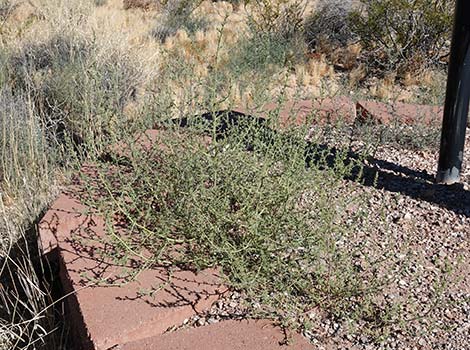 Barbedwire Russian Thistle tends to be a spreading plant |
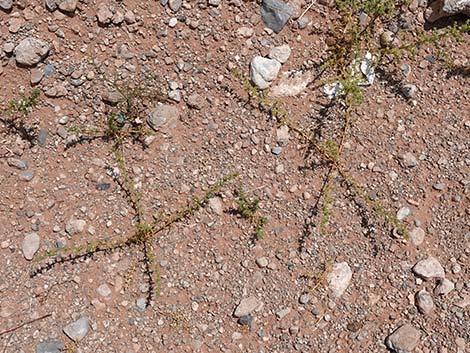 Initial stems on sprouts often form an X |
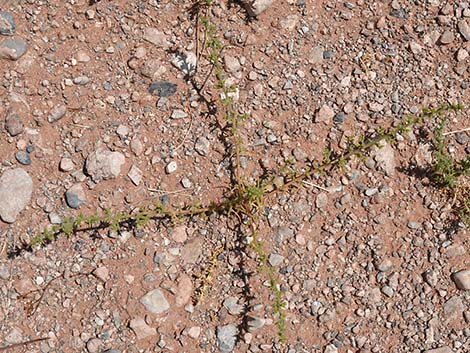 Initial stems on sprouts often form an X |
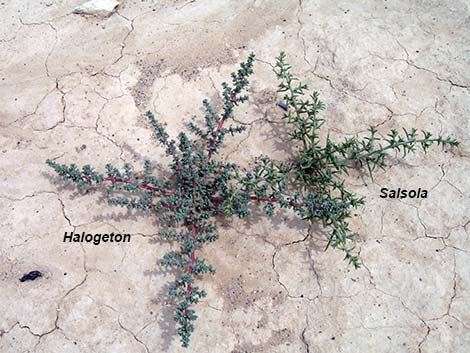 Initial stems on sprouts often form an X, but so does Halogeton |
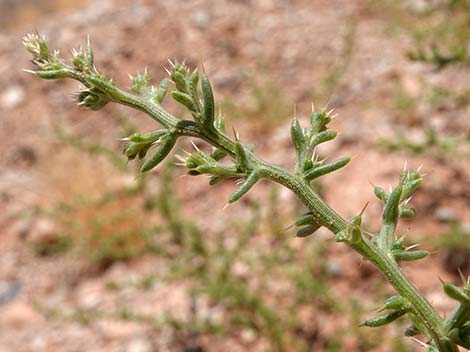 Stems usually without any red stripes |
 Stems usually without any red stripes |
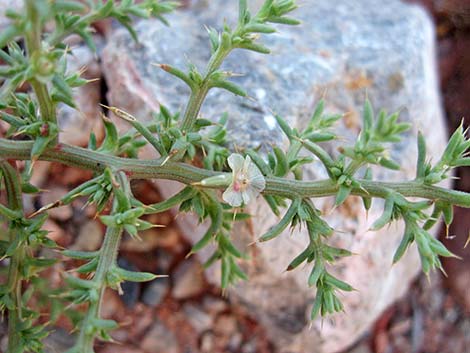 Stems light green (sometimes lightly pigmented) with red |
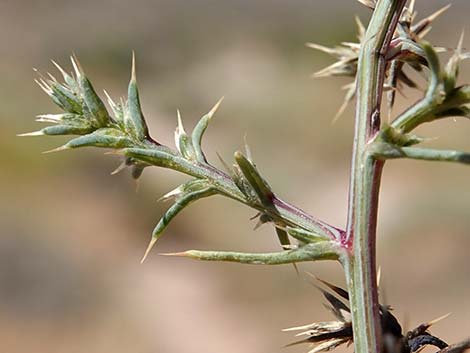 Stems light green (sometimes lightly pigmented with red) |
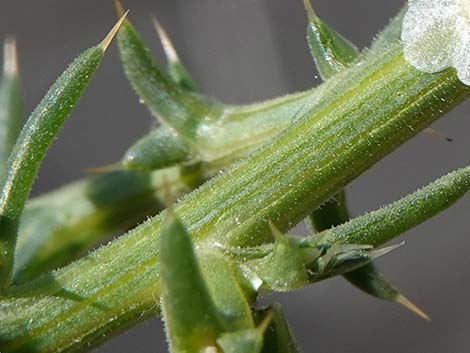 Stem and leaves may have tiny prickles |
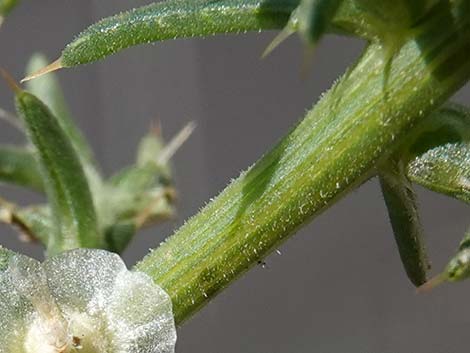 Stem and leaves may have tiny prickles |
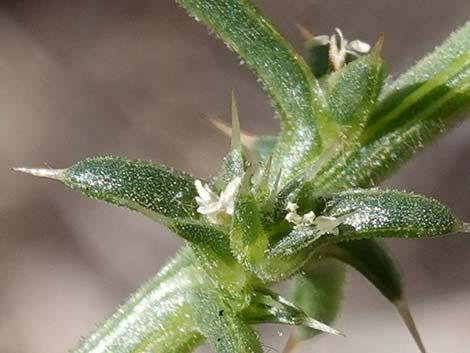 Staminate flowers |
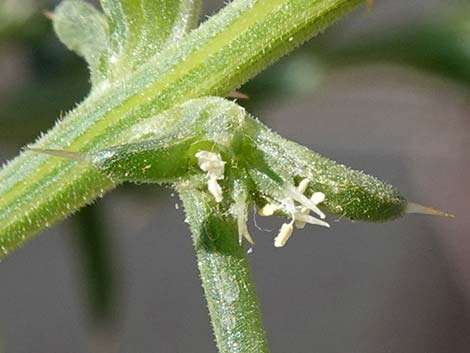 Staminate flowers |
 Barbedwire Russian Thistle in flower |
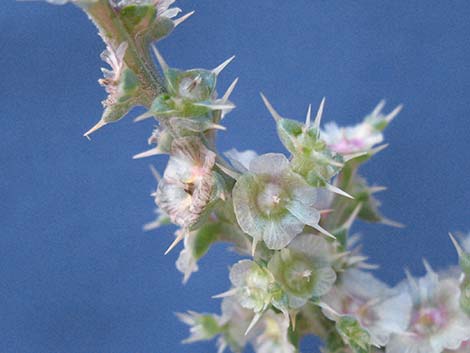 Flowers are actually calyx wings |
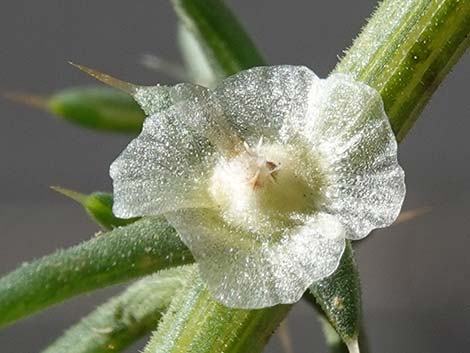 Calyx wings white to pale pink, veins conspicuous |
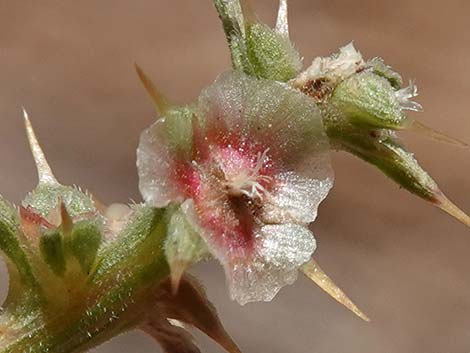 Calyx wings white to pale pink, veins conspicuous |
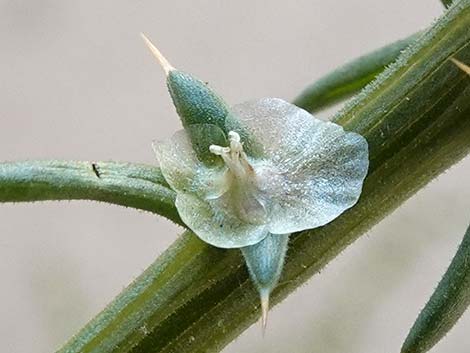 |
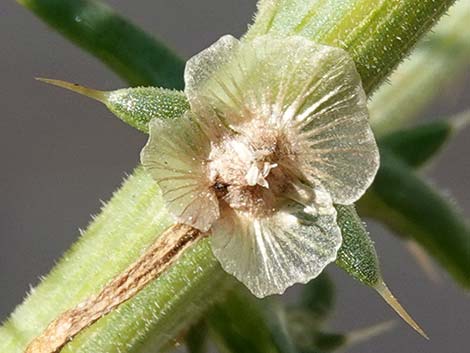 |
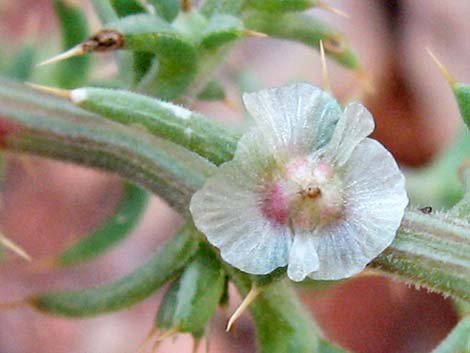 Calyx wings often reddish near base of the wings, veins conspicuous |
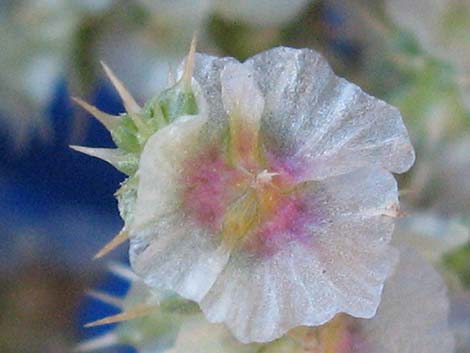 Calyx wings often reddish near base of the wings, veins conspicuous |
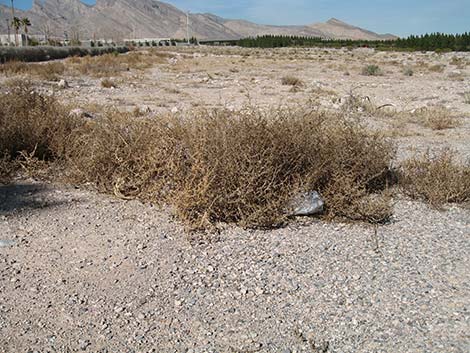 Barbedwire Russian Thistle on a construction site in Las Vegas |
 Barbedwire Russian Thistle often pile up against fences |
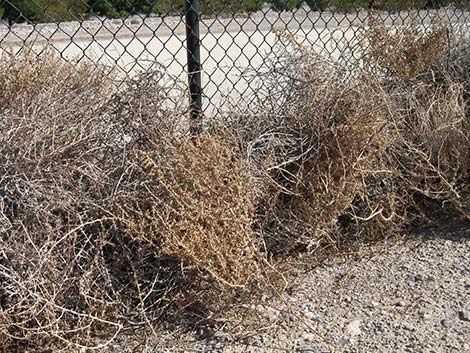 |
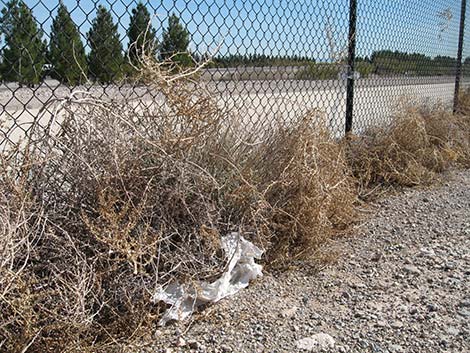 |
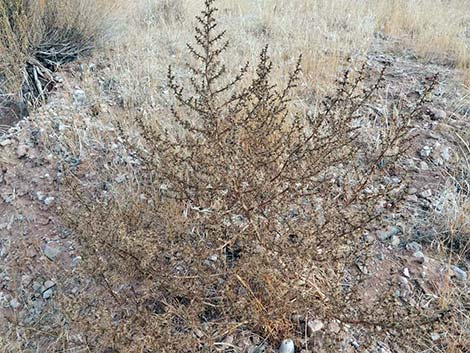 |
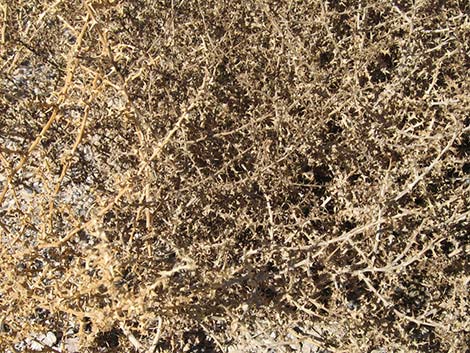 |
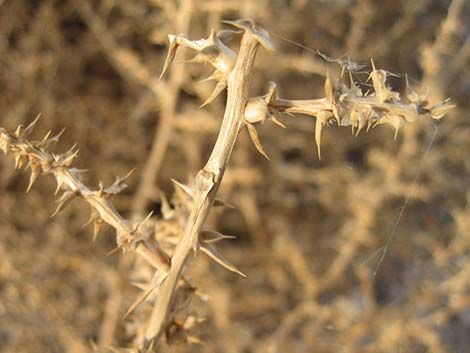 Spiny leaves on dried plant |
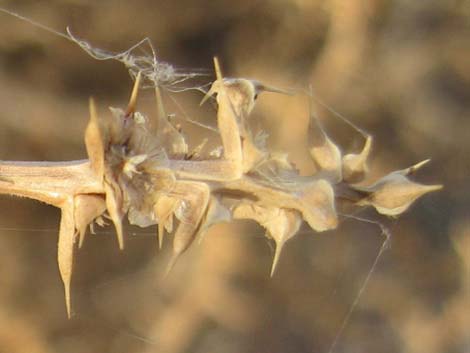 Spiny leaves on dried plant |
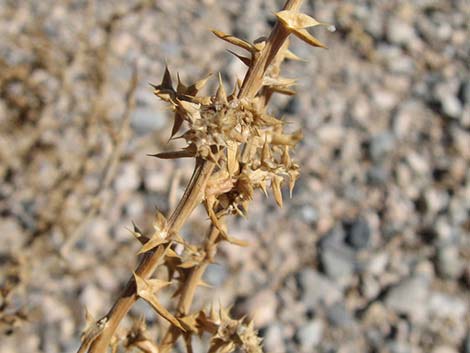 |
 |
Note: All distances, elevations, and other facts are approximate. Names generally follow the USDA database.
![]() ; Last updated 240720
; Last updated 240720
| All Annual Forbs | Plant Species Index | Glossary | Copyright, Conditions, Disclaimer | Home |